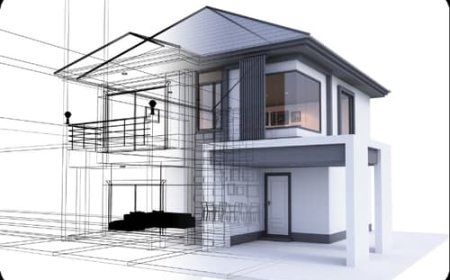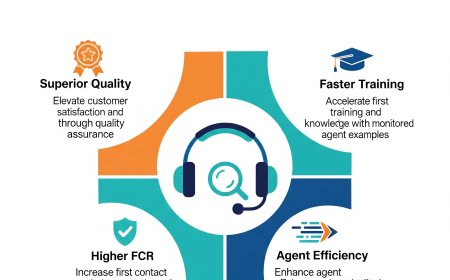How To Visit San Elizario Chapel El Paso Wedding Photos
How to Visit San Elizario Chapel El Paso Wedding Photos San Elizario Chapel, nestled in the historic San Elizario district of El Paso, Texas, is more than just a place of worship—it is a living monument to centuries of cultural heritage, architectural beauty, and enduring tradition. For couples seeking a wedding venue steeped in history and charm, this 19th-century adobe chapel offers an unparalle
How to Visit San Elizario Chapel El Paso Wedding Photos
San Elizario Chapel, nestled in the historic San Elizario district of El Paso, Texas, is more than just a place of worship—it is a living monument to centuries of cultural heritage, architectural beauty, and enduring tradition. For couples seeking a wedding venue steeped in history and charm, this 19th-century adobe chapel offers an unparalleled backdrop. But beyond the ceremony itself, many couples and photography enthusiasts are drawn to the chapel for its breathtaking wedding photos. Whether you're a newly engaged couple planning your big day, a professional photographer scouting locations, or a history buff curious about one of the Southwest’s most iconic landmarks, knowing how to visit San Elizario Chapel and capture or view its wedding photos is essential.
This guide provides a comprehensive, step-by-step walkthrough on how to visit San Elizario Chapel for the purpose of experiencing, photographing, and accessing its renowned wedding imagery. We’ll cover everything from logistical planning and access permissions to photography etiquette, recommended tools, real-world examples, and answers to frequently asked questions. By the end of this guide, you’ll have the knowledge to navigate the chapel’s unique environment with confidence and respect, ensuring your visit yields stunning visual memories and meaningful cultural appreciation.
Step-by-Step Guide
1. Research the Chapel’s History and Significance
Before planning your visit, take time to understand the cultural and historical context of San Elizario Chapel. Built in 1877, it is one of the oldest continuously operating chapels in Texas and is listed on the National Register of Historic Places. Originally constructed by Spanish-Mexican settlers, the chapel served as a spiritual and community center for generations. Its thick adobe walls, wooden beams, and hand-carved altar reflect traditional Southwestern architecture.
Understanding its significance enhances your experience. Many wedding photos taken here capture not just the couple, but the story of heritage, resilience, and love that the chapel embodies. This context will inform your approach to photography and interaction with the site.
2. Determine Your Purpose for Visiting
Your goals will shape your visit. Are you:
- A couple planning a wedding at the chapel?
- A photographer seeking to document wedding imagery for your portfolio?
- A tourist interested in viewing the chapel and its photo collections?
- A historian or researcher compiling visual records?
Each purpose requires different preparation. Couples must coordinate with chapel authorities for ceremony scheduling. Photographers need to know the best lighting conditions and permitted areas. Tourists may only require visiting hours and access guidelines.
3. Contact the Chapel or Parish Office
San Elizario Chapel is an active parish under the Diocese of El Paso. While it welcomes visitors, it is not a public museum. Access to the interior and surrounding grounds may be restricted during services, weddings, or private events.
Reach out to the parish office via phone or email to inquire about visiting hours, availability for photo sessions, and any rules regarding photography. Many chapels require advance notice for non-wedding photo shoots to avoid conflicts with scheduled events. Be respectful and patient—parish staff are often volunteers or clergy managing multiple responsibilities.
Ask specifically:
- What are the current visiting hours for non-wedding guests?
- Is photography permitted inside and outside the chapel?
- Are there any fees or permits required for professional photography?
- Can you schedule a time slot for a private viewing or photo session?
4. Plan Your Visit Around Lighting and Weather
Lighting is critical for capturing the chapel’s beauty in wedding photos. The best times to photograph the exterior are during the golden hours—approximately one hour after sunrise and one hour before sunset. During these periods, the warm, low-angle light casts soft shadows and highlights the texture of the adobe walls and wooden doors.
For interior shots, natural light enters through small stained-glass windows and high openings. Mid-morning (9–11 a.m.) often provides the most balanced illumination. Avoid midday sun, which creates harsh contrasts and blown-out highlights.
Weather also plays a role. Clear, slightly overcast days are ideal for even lighting. Rain can make the surrounding grounds muddy and limit access, but it can also produce moody, cinematic images. Always check the forecast and plan accordingly.
5. Obtain Necessary Permissions for Photography
If you intend to take professional photos—whether for a wedding, portfolio, or publication—you must secure formal permission. Even if you're not a professional, if you plan to use the images commercially or publicly, you should still seek authorization.
Some key points:
- Do not assume public access equals public photography rights.
- Respect the chapel’s sacred nature—no flash photography inside, no climbing on structures, no disruptive behavior.
- Some parishes require a liability waiver or a small donation to support maintenance.
- Wedding photographers hired by couples are typically covered under the couple’s booking, but solo photographers must request separate clearance.
Always get permission in writing or via email. This protects you and the chapel from misunderstandings.
6. Visit the Chapel and Document Responsibly
Once you’ve secured access, arrive early to scout the location. Walk around the perimeter to identify the best angles for wide shots, close-ups of architectural details, and candid moments.
Key photo opportunities include:
- The main entrance with its wooden double doors and wrought-iron accents
- The bell tower and surrounding courtyard
- The interior altar, candles, and religious iconography
- Archways framing distant desert landscapes
- Reflections in puddles after rain
Use a tripod for long exposures if shooting during low-light conditions. Bring a lens with a wide aperture (f/1.8–f/2.8) for shallow depth of field, which beautifully isolates subjects against the textured walls.
Remember: this is a place of worship. Keep noise to a minimum. Turn off your phone. Avoid blocking pathways or interrupting prayer services. If you see someone praying, wait or move to another area.
7. Access and Curate Wedding Photos from Past Events
Many couples who married at San Elizario Chapel share their wedding photos online. To view these:
- Search social media platforms using hashtags like
SanElizarioChapelWedding, #ElPasoWeddingPhotography, or #TexasAdoboWedding.
- Use Google Images with filters for “labeled for reuse” to find publicly shared photos.
- Visit wedding photography websites such as The Knot, WeddingWire, or local El Paso-based studios that feature the chapel in their galleries.
- Some photographers maintain private portfolios—contact them directly via their website for permission to view or license images.
When using these photos for inspiration, always credit the original photographer if sharing publicly. Never reproduce images without permission if they are copyrighted.
8. Respect Local Customs and Community Norms
San Elizario is a tight-knit, historically Mexican-American community. Many residents still speak Spanish and observe Catholic traditions. Your behavior should reflect cultural sensitivity.
- Dress modestly—avoid revealing clothing, especially inside the chapel.
- Do not take photos of individuals without consent, particularly during religious services.
- Leave no trash. The chapel relies on community upkeep.
- Support local businesses. Visit nearby cafes, boutiques, or art galleries to contribute to the neighborhood’s vitality.
Best Practices
1. Prioritize Respect Over Aesthetics
While capturing stunning wedding photos is the goal, never compromise the sanctity of the space. The chapel’s value lies in its authenticity. Forced poses, loud music, or excessive props can disrupt its quiet dignity. Let the architecture and natural surroundings speak for themselves.
2. Shoot in RAW Format
To preserve the maximum detail in the chapel’s varied lighting conditions, always shoot in RAW format. This allows for greater flexibility in post-processing, especially when recovering shadows in the dim interior or balancing highlights on the sunlit exterior walls.
3. Use a Reflective Surface for Interior Lighting
Since natural light is limited inside, use a small, portable reflector to bounce ambient light onto the couple’s faces. White foam boards or collapsible silver reflectors work well. Avoid using artificial lighting unless explicitly permitted.
4. Capture Environmental Context
Don’t just photograph the couple—show the chapel’s surroundings. Include shots of the desert landscape beyond the courtyard, the dusty path leading to the entrance, the weathered wooden benches, or the historic cemetery nearby. These elements tell a fuller story.
5. Time Your Visit to Avoid Crowds
Weekdays are quieter than weekends. Early mornings (before 9 a.m.) and late afternoons (after 4 p.m.) typically have fewer visitors. Avoid holidays and feast days like Our Lady of Guadalupe (December 12) or Easter, when the chapel may be crowded with worshippers.
6. Create a Shot List
Before arriving, prepare a list of 10–15 key shots you want to capture. Examples:
- Wide-angle exterior with desert backdrop
- Close-up of the chapel’s wooden door handle
- Couple holding hands on the steps
- Backlit silhouette at sunset
- Details of the altar candles and flowers
- Reflection in a puddle near the entrance
- Guests walking down the path
- Overhead shot of the courtyard
This keeps your session focused and efficient.
7. Preserve the Chapel’s Integrity
Never touch or lean on the walls, alter decorations, or move religious objects. Even small actions can cause long-term damage to centuries-old materials. Use a telephoto lens to capture details from a distance.
8. Share Responsibly
If you publish photos of the chapel online, tag the location accurately and include a brief note about its history. This educates others and promotes cultural appreciation rather than exploitation. Avoid using the chapel’s image in unrelated commercial campaigns without permission.
Tools and Resources
1. Recommended Camera Equipment
For optimal results, consider the following gear:
- Camera: Full-frame DSLR or mirrorless (Canon EOS R5, Sony A7 IV, Nikon Z7 II)
- Lenses: 24–70mm f/2.8 (versatile), 85mm f/1.4 (portraits), 16–35mm f/2.8 (interior and wide shots)
- Tripod: Lightweight carbon fiber (Manfrotto Befree or Peak Design Travel Tripod)
- Reflectors: 5-in-1 collapsible reflector for fill light
- Extra Batteries and Memory Cards: Shooting in RAW consumes power and storage quickly
- Neutral Density Filter: Useful for long exposures during bright daylight
2. Photo Editing Software
Post-processing enhances the chapel’s natural beauty:
- Adobe Lightroom: Ideal for color grading, exposure correction, and batch editing.
- Adobe Photoshop: For retouching minor imperfections or compositing multiple exposures.
- Capture One: Excellent for RAW processing with superior color science.
- Skylum Luminar Neo: AI-powered tools for enhancing textures in adobe walls and desert skies.
3. Online Resources for Research and Inspiration
Use these platforms to study existing wedding photography at San Elizario Chapel:
- Instagram: Search hashtags:
SanElizarioChapel, #ElPasoWedding, #AdoboWedding
- WeddingWire and The Knot: Filter galleries by “San Elizario Chapel” under El Paso venues.
- Google Maps Street View: Explore the chapel’s exterior layout and surrounding terrain.
- YouTube: Search for “San Elizario Chapel Tour” for virtual walkthroughs.
- El Paso County Historical Society: Offers archival photos and documents on the chapel’s history.
- Diocese of El Paso Website: Official information on services, events, and contact details.
4. Local Guides and Photographers
Consider hiring a local El Paso wedding photographer familiar with the chapel. They know the best times to visit, how to navigate permissions, and where to find hidden photo spots. Search for photographers with portfolios featuring “San Elizario Chapel” in their titles. Many offer guided photo sessions or location scouting as part of their services.
5. Mobile Apps for Planning
Use these apps to optimize your visit:
- Sun Surveyor: Predicts sun and moon positions for golden hour timing.
- PhotoPills: Augmented reality tool for planning shots based on sun angle and composition.
- Google Earth: View satellite imagery and elevation to understand the chapel’s placement in the landscape.
- Weather Underground: Detailed local forecasts for El Paso’s desert climate.
Real Examples
Example 1: The Martínez Wedding – 2021
In spring 2021, Ana Martínez and Carlos Ruiz chose San Elizario Chapel for their intimate wedding. With only 20 guests, they hired local photographer Marisol Rivera, who had previously documented the chapel for a historical society project.
Rivera arrived at 5:30 a.m. to capture the first light hitting the chapel’s east-facing facade. She used a 24mm lens to frame the couple against the bell tower, with the Chihuahuan Desert stretching behind them. For the ceremony, she shot from the side aisle to avoid blocking the altar. One iconic image shows the bride’s veil catching the morning light as she steps out of the chapel, her shadow elongated across the dirt path.
The photos were later featured in Texas Bride Magazine and remain among the most-viewed galleries on WeddingWire for El Paso venues.
Example 2: The Thompson Photo Project – 2022
Photography student Liam Thompson undertook a university project documenting historic religious sites in West Texas. He spent three days at San Elizario Chapel, capturing both architecture and community life.
He obtained permission from the parish and visited during non-service hours. He focused on textures: cracks in the adobe, the patina of the wooden altar, the faded paint on the crucifix. He used a 50mm lens for detail shots and a drone (with FAA clearance) for aerial views of the chapel nestled in the desert.
His exhibit, “Sacred Soil: The Adobes of San Elizario,” was displayed at the University of Texas at El Paso and later published in the Journal of Southwestern Cultural Heritage.
Example 3: The Online Archive – 2023
A couple from New Mexico, married at the chapel in 2019, created a public Google Album titled “Our Day at San Elizario Chapel.” They uploaded over 120 photos, including candid moments of guests, close-ups of the floral arrangements, and even a photo of the chapel’s original 1877 baptismal record displayed on the wall.
They included captions in both English and Spanish, honoring the chapel’s bilingual heritage. The album has since become a reference point for other couples planning weddings there. It demonstrates how personal archives can serve as valuable cultural resources.
Example 4: The Misstep – A Cautionary Tale
In 2020, a viral Instagram post featured a photoshoot at San Elizario Chapel with a model wearing a revealing gown and holding a champagne flute. The post was criticized by the local community for disrespecting the chapel’s sacred nature. The parish issued a public statement reminding visitors that the chapel is not a backdrop for commercial fashion shoots without permission.
The photographer removed the post and later submitted a formal request for future access, which was granted under strict conditions. This example underscores the importance of cultural sensitivity and proper protocol.
FAQs
Can I visit San Elizario Chapel without a wedding?
Yes, visitors are welcome during designated hours, typically weekdays from 9 a.m. to 4 p.m., but always confirm with the parish office. The chapel is not open for casual tourism on Sundays due to services.
Do I need a permit to take wedding photos at San Elizario Chapel?
If you’re not the couple getting married, yes. Professional photography requires written permission from the Diocese of El Paso. Casual visitors may take personal photos, but commercial use is prohibited without authorization.
Is there a fee to photograph at the chapel?
There may be a small donation requested to support maintenance, especially for non-wedding photo sessions. Fees vary depending on duration and purpose. Always ask during your initial inquiry.
Can I get married at San Elizario Chapel if I’m not Catholic?
Yes, interfaith and non-Catholic couples may be permitted to marry at the chapel, subject to approval by the pastor. Requirements may include attending pre-marital counseling and respecting the chapel’s liturgical traditions.
Are drones allowed for photography?
No, drones are not permitted without special permission from the Diocese and FAA. The chapel is in a controlled airspace zone, and drone use is generally discouraged due to noise and safety concerns.
Where can I find real wedding photos taken at San Elizario Chapel?
Search Instagram with hashtags like
SanElizarioChapelWedding, visit WeddingWire or The Knot, or contact El Paso-based photographers who list the chapel as a venue. Many galleries are publicly accessible with proper attribution.
Is the chapel accessible for guests with mobility challenges?
The grounds are uneven due to historic construction, and the interior has narrow doorways and steps. While efforts have been made to improve accessibility, it is not fully ADA-compliant. Contact the parish in advance to discuss accommodations.
Can I bring flowers or decorations for a photo shoot?
Small, non-invasive floral arrangements may be permitted with prior approval. Avoid attaching anything to walls, doors, or religious artifacts. Use temporary, removable stands.
What’s the best time of year to photograph at the chapel?
Spring (March–May) and fall (September–November) offer mild temperatures and clear skies. Summer is extremely hot, and winter nights can be chilly. Avoid monsoon season (July–August) due to sudden rain and mud.
Can I use the chapel’s photos in a book or publication?
You must obtain written permission from the Diocese of El Paso and credit the chapel and any original photographers. Copyright applies to both the architecture and any artistic interpretations.
Conclusion
Visiting San Elizario Chapel to experience or photograph its wedding imagery is more than a logistical task—it is an act of cultural stewardship. This chapel is not merely a backdrop; it is a vessel of memory, faith, and resilience. Every photograph taken here carries the weight of history and the hope of new beginnings.
By following the steps outlined in this guide—researching its past, respecting its present, and capturing its beauty with integrity—you contribute to the preservation of its legacy. Whether you’re a couple exchanging vows, a photographer framing light through ancient windows, or a curious traveler drawn to its quiet grandeur, your presence should honor the chapel’s enduring spirit.
The most powerful wedding photos from San Elizario are not those with the most filters or the most elaborate setups. They are the ones that reveal the soul of the place: the way the sun hits the altar at dusk, the laughter echoing in the courtyard, the worn stones beneath bare feet, the quiet dignity of a community that has kept this sacred space alive for nearly 150 years.
Plan wisely. Shoot thoughtfully. Respect deeply. And let the chapel tell its own story through your lens.

















































